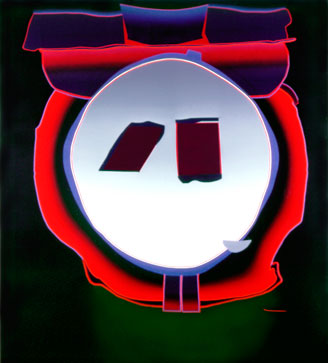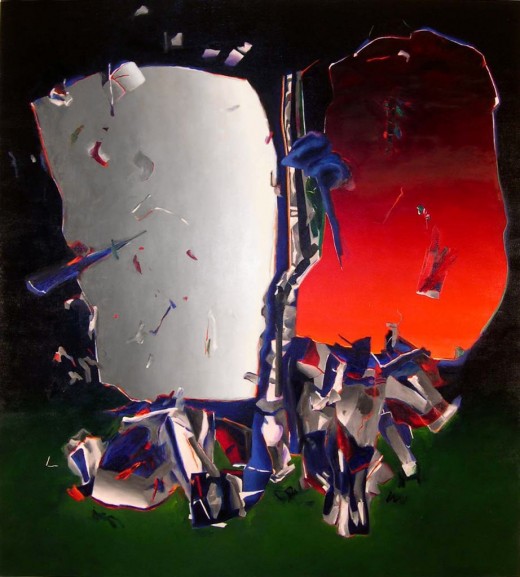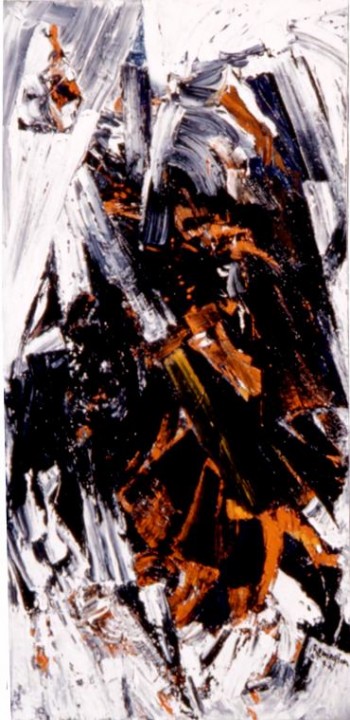Remington was born in 1935 and raised in Haddonfield, New Jersey. A descendant of the famed Western artist, Frederic Remington, she received her BFA from the San Francisco Art Institute in 1955. In 1954, during the Beat years, she was one of the six painters and poets, and the only woman, who founded the now legendary 6 Gallery in San Francisco, where Alan Ginsburg first read his poem, Howl. Remington spent two years in Japan studying calligraphy after graduation, then traveled throughout South East Asia and India, pursuing a lifelong interest in those cultures. She moved to New York City in 1965. Remington has been the recipient of a several fellowships including a Guggenheim, a National Endowment for the Arts, and a Tamarind Fellowship, among others.
Remington gained renown after 1963 for an aggressive and emblematic visual language influenced by abstract expressionism and her undergraduate work.. In 1962, she joined the Dilexi Gallery in San Francisco and had solo shows in 1962,’63,’ and ’65. In 1966, Remington became affiliated with the Bykert Gallery in New York and had solo shows there in 1967,’69,’72, and ’74. She lived in Paris in 1967 and 1968, and had the inaugural show at Galerie Darthea Speyer in 1968. This exhibition introduced her work to Europe. During the 1970s, Remington continued painting and exhibiting both nationally and internationally, while pursuing and refining her unique imagery. In 1972, she was interviewed for the Archives of American Art, Smithsonian, Washington, D.C. Tamarind Institute in Albuquerque, NM, invited Remington to make lithographs, and she produced 15 editions there beginning in 1973.
Remington had a 20 year (1963-1983) Retrospective exhibition which opened at the Newport Harbor Museum in California in 1983, and traveled to the Oakland Museum of Art and several other venues. In 1984, she received a Guggenheim Fellowship and began to pursue a new and different direction in her work. In1987, after a four-year hiatus from exhibiting, Remington showed radically transformed imagery at the Jack Shainman Gallery in New York and at the Shoshana Wayne gallery in Los Angeles the following year. The mechanistic and didactic flavor of the earlier works had been replaced with looser, more expressionistic and organic qualities, subtlety and paradox, with vigorously painted surfaces and more all-over compositions. She continued exploring this new direction and exhibiting the work throughout the 1990s, including a 1992 show at Galerie Darthea Speyer, Paris. She was elected to the National Academy of Design in 1999 and also received a Pollock-Krasner Foundation Grant that same year.
In 2001, Remington produced a breakthrough painting titled Eridan , which she says finally united the free-flowing gesturalism of both her very early and later work, with the more intense, emblematic, mechanistic, and sensuous aspects of the work by which she is best known. That same year, she exhibited new paintings and large scale drawings at the Mitchell Algus Gallery in New York. Also in 2001, an early lithograph from the Beat years was included in the Stamp of Impulse: Abstract Expressionist Prints exhibition at the Worcester Art museum in MA. The show traveled to other museums in the U.S. for several years and Remington’s piece was featured on the cover of the 295 page catalogue. In 2002, a large painting was included in the Parallels and Intersections exhibition at the San Jose Museum of Art. CA. A major piece will be included in the Psychedelic: Optical & Visionary Art Since the 1960s exhibition at the San Antonio Museum of Art in 2009. Show will travel in the US for 2 years. Remington’s work is included in over 40 major museum collections worldwide. She lives and works in New York.

Omina
Download CV [pdf]
Deborah Remington Interview with Professor Carlos Villa of San Francisco Art Institute



